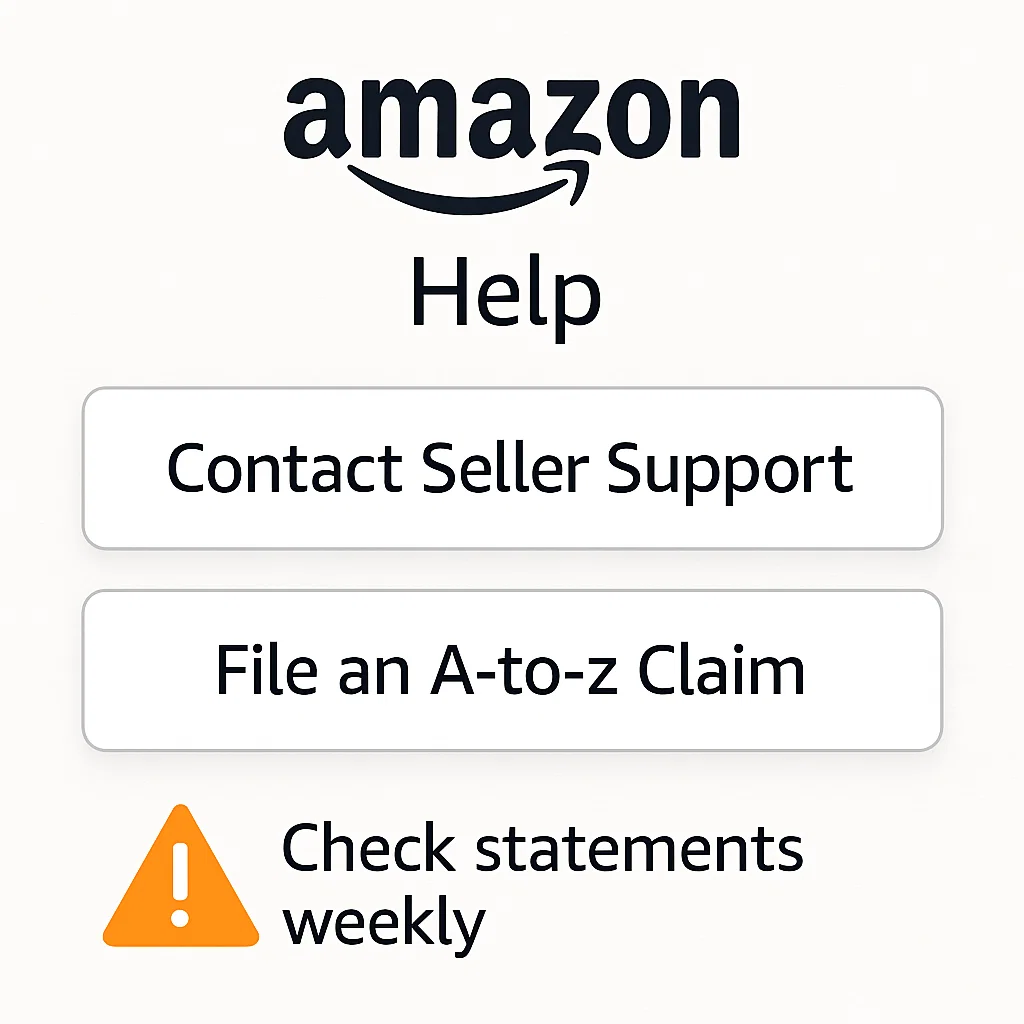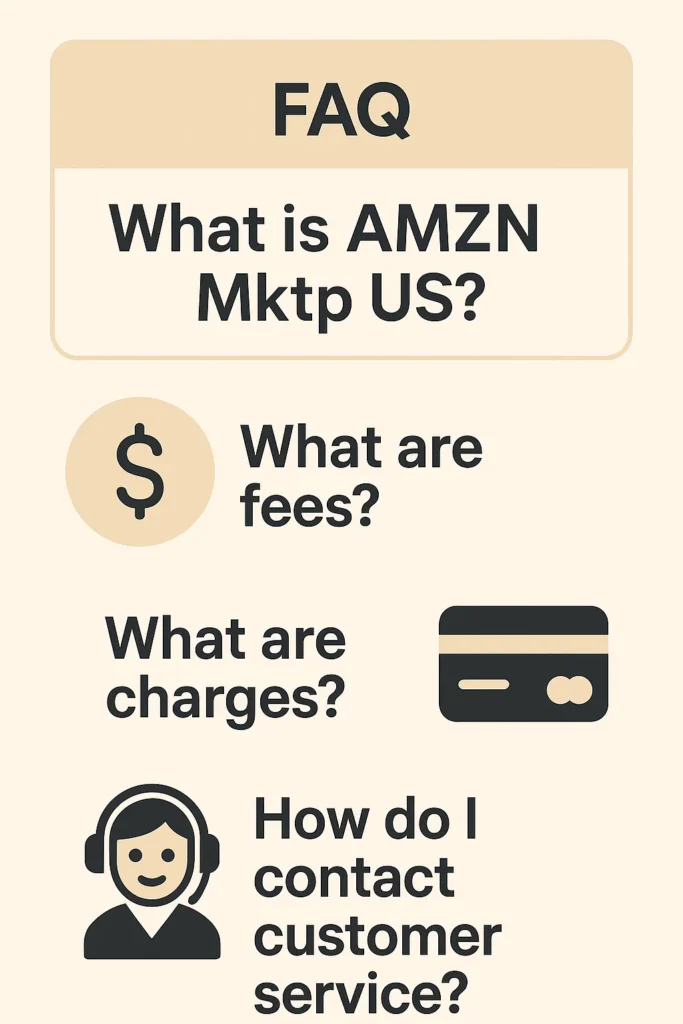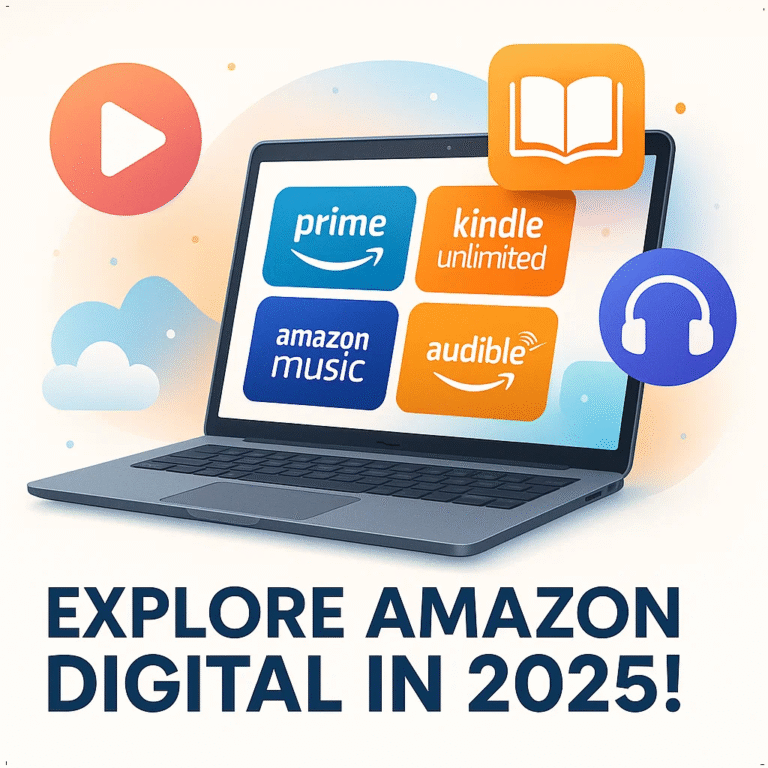How Amazon Marketplace is best to others for Sellers
Selling online can feel like stepping into a bustling global bazaar, and no platform captures this energy quite like the Amazon Marketplace. With over 150 million Prime members and 50% of Amazon’s sales driven by third-party sellers, it’s a goldmine for entrepreneurs. But navigating its fees, policies, and charges—like those mysterious “AMZN Mktp US” lines on your credit card—can be daunting for new sellers. This 2025 guide is your roadmap to mastering the Amazon Marketplace, from setting up your seller account to understanding costs, policies, and customer service. We’ll also compare Amazon to platforms like eBay, Etsy, and Shopify to help you choose the right fit for your business. Whether you’re launching a side hustle or scaling a brand, you’ll find step-by-step advice, real-world examples, and expert tips to thrive. Ready to join the 20% of sellers earning $100,000+ annually? Let’s get started with AMZ Updates for information!
What Is the Amazon Marketplace?
The Amazon Marketplace is a platform within Amazon.com where third-party sellers—individuals or businesses—list and sell products alongside Amazon’s own inventory. Launched in 2000, it now accounts for 50% of Amazon’s sales, with 2 million active sellers worldwide. Unlike Amazon’s direct retail, Marketplace sellers set their own prices, manage listings, and choose fulfillment methods like Fulfillment by Amazon (FBA) or Fulfillment by Merchant (FBM).
Key Features
- Reach: Access 150M+ Prime members and 300M+ global customers.
- Tools: Seller Central provides analytics, advertising, and inventory management.
- Fulfillment Options: FBA handles storage, shipping, and returns; FBM gives sellers control.
- Fees: Include referral (8–15%), subscription ($39.99/month for Professional), and FBA fees ($2.50–$10/unit).
In 2025, Amazon has enhanced Marketplace with AI-driven product recommendations and expanded Seller University videos, making it easier for beginners to succeed.

How to Start Selling on Amazon Marketplace
Starting on Amazon Marketplace is straightforward but requires preparation. Below is a step-by-step guide for 2025.
Step 1: Choose Your Seller Account
- Individual: $0.99 per item sold, ideal for <40 items/month. No access to advanced tools.
- Professional: $39.99/month, suited for high-volume sellers. Includes advertising, analytics, and multi-marketplace selling (U.S., Canada, Mexico).
Tip: Downgrade to Individual in Seller Central to avoid unexpected $39.99 charges if you’re testing the waters.
Step 2: Gather Requirements
- Business Email: Use a professional address (e.g., sales@yourbrand.com).
- Bank Account: Must accept Amazon’s payouts (U.S. account for U.S. Marketplace).
- Credit Card: For fees and verification (e.g., $1.04 MX charge for card validation).
- Tax ID: EIN (businesses) or SSN (individuals) for U.S. tax reporting.
- Phone Number: For account verification and customer service.
Step 3: Create Your Seller Account
- Visit sell.amazon.com and click “Sign Up.”
- Log in with your Amazon account or create one.
- Enter business details (name, address, tax ID).
- Verify your identity via OTP or video call (new in 2025 for fraud prevention).
- Add payment methods and billing address.
Step 4: Set Up Your Storefront
- Brand Registry: If you own a trademark, enroll at brandregistry.amazon.com for enhanced listings and protection.
- List Products: Add products manually or via bulk uploads in Seller Central. Include high-quality images, keywords, and descriptions.
- Choose Fulfillment: Opt for FBA (Amazon handles logistics) or FBM (you ship).
Step 5: Launch and Optimize
- Pricing: Use Amazon’s Automate Pricing tool to stay competitive.
- Advertising: Start with Sponsored Products (CPC model, $0.50–$2/click).
- Reviews: Request feedback via Seller Central’s “Request a Review” feature.
Understanding Amazon Marketplace Fees and Charges
Fees are a critical aspect of selling on Amazon, impacting profitability. Below is a detailed breakdown.
Subscription Fees
- Individual: $0.99 per item sold, no monthly fee.
- Professional: $39.99/month, waived for low-volume months in 2025 (new policy).
- Unexpected Charges: New sellers may see $39.99 charges if defaulted to Professional. Downgrade in Seller Central to avoid.
Referral Fees
- Rate: 6–45% of the sale price (most categories 8–15%, e.g., electronics 8%, clothing 17%).
- Minimum Fee: $0.30/item for categories like books or media.
- Example: A $50 gadget incurs a $4 referral fee (8%).
FBA Fees
- Storage: $0.87–$2.66/cubic foot/month (higher in October–December).
- Fulfillment: $2.50–$10/unit, based on size/weight (e.g., $3.19 for a 1-lb item).
- Other: Removal ($0.25–$1/unit), disposal ($0.15–$0.50/unit), long-term storage ($6.90/cubic foot for 365+ days).
Other Charges
- Shipping Credits: For FBM, Amazon sets credits (e.g., $4.49 for standard shipping), which may not cover actual costs. Adjust product prices to offset.
- Advertising: Sponsored Products or Brands cost $0.50–$2/click.
- Refunds/Chargebacks: Sellers cover refunds; chargebacks (buyer disputes via credit card) may incur $20 fees.
Tracking Charges
- Seller Central Reports: Use the “Payments Transactions View” to match charges (e.g., AMZN Mktp US) to orders, refunds, or fees.
- Tools: SimplyWise reconciles bank statements with Amazon receipts to detect discrepancies.

Amazon Marketplace Policies and Best Practices
Amazon’s policies ensure a trusted marketplace but can be strict. Understanding them prevents account suspensions.
Key Policies
- A-to-Z Guarantee: Protects buyers from defective or undelivered items. Sellers must resolve claims or face refunds/chargebacks.
- Product Compliance: Items must meet safety standards (e.g., UL certification for electronics). Submit compliance documents via Seller Central.
- Performance Metrics:
- Order Defect Rate (ODR): <1% (returns, negative feedback, A-to-Z claims).
- Cancellation Rate: <2.5%.
- Late Shipment Rate: <4%.
- Prohibited Items: Avoid restricted categories (e.g., tobacco, weapons) or face listing removal.
- Returns: FBA offers free returns for Prime; FBM sellers set their own policies (30-day minimum).
Best Practices
- Optimize Listings: Use keywords like “wireless earbuds” in titles and bullet points. Tools like Helium 10 boost visibility.
- Monitor Metrics: Check Seller Central’s Performance tab weekly to avoid policy violations.
- Customer Service: Respond to buyer inquiries within 24 hours via Seller Central’s Messaging.
- Inventory Management: Use FBA’s Multi-Channel Fulfillment for other platforms to streamline stock.
- Fraud Prevention: Set up two-factor authentication and monitor charges for AMZN Mktp US or AMZN.COM/BILL WA.
Amazon Marketplace Customer Service and Charge Disputes
Customer service and charge disputes are critical for sellers and buyers, especially with reports of fraudulent charges ($31.79–$433).
For Sellers
- Contacting Support: Open a case in Seller Central’s Help section. Categories include fees, refunds, or account issues.
- Common Issues:
- Best Practice: Use Seller University videos at sellercentral.amazon.com for troubleshooting.
For Buyers
- Identifying Charges: AMZN Mktp US, AMZN.COM/BILL WA, or AMZN Payments may indicate Marketplace purchases, subscriptions, or authorizations ($1 holds). Check “Your Orders” at amazon.com.
- Disputing Charges:
- Fraud Concerns: Reported cases ($50, $84.98, $433) suggest checking statements weekly and using tools like SimplyWise.

Benefits and Features of Selling on Amazon Marketplace
The Amazon Marketplace offers unique advantages for new sellers, driving buyer intent.
Benefits
- Massive Reach: 150M+ Prime members and 300M+ global customers.
- Prime Eligibility: FBA products qualify for Prime shipping, boosting sales by 20–30%.
- Logistics: FBA handles storage, shipping, and returns, saving time.
- Trust: Amazon’s A-to-Z Guarantee builds buyer confidence.
- Tools: Seller Central’s analytics, advertising, and Automate Pricing optimize performance.
Features
- Sponsored Ads: Promote products for $0.50–$2/click, increasing visibility.
- Brand Registry: Protects trademarks and unlocks A+ Content for enhanced listings.
- Global Selling: Sell in 20+ marketplaces (e.g., U.S., U.K., Japan) via one account.
- Multi-Channel Fulfillment: Use FBA for eBay or Shopify orders.
- AI Recommendations: New in 2025, AI suggests high-demand products based on market trends.
Amazon Marketplace vs. Other Platforms
Choosing the right platform depends on your business goals. Below is a 2025 comparison of Amazon Marketplace with eBay, Etsy, Walmart, and Shopify.
Amazon Marketplace
- Pros: Massive reach (150M+ Prime), FBA logistics, Prime eligibility, advanced tools.
- Cons: High fees (8–15% referral, $39.99/month Professional), strict policies, limited branding.
- Fees: $39.99/month or $0.99/item, 8–15% referral, FBA ($2.50–$10/unit).
- Best For: High-volume sellers, FBA users, global expansion.
eBay
- Pros: Lower fees (10–13% final value), flexible listings, auction model.
- Cons: Smaller audience (135M active buyers), no fulfillment service like FBA.
- Fees: 10–13% final value, $0.30/order, optional store subscriptions ($4.95–$74.95/month).
- Best For: Used goods, niche collectibles, low-volume sellers.
Etsy
- Pros: Niche for handmade/vintage (6.5% transaction fee), strong community, branding control.
- Cons: Limited audience (90M buyers), no logistics like FBA.
- Fees: 6.5% transaction, 20¢ listing, 3–5% payment processing.
- Best For: Artisans, creative sellers, small-scale businesses.
Walmart Marketplace
- Pros: Growing audience (120M monthly visitors), no monthly fees, simpler approval.
- Cons: Smaller reach than Amazon, limited tools, no Prime-like program.
- Fees: 6–15% referral, no subscription.
- Best For: Established brands, U.S.-focused sellers.
Shopify
- Pros: Full branding control, lower fees (2.9% + 30¢/transaction), multi-channel integration.
- Cons: No built-in audience, requires marketing, no logistics like FBA.
- Fees: $29–$299/month, 2.9% + 30¢/transaction, optional apps.
- Best For: Brand-focused businesses, direct-to-consumer models.
Verdict: Amazon excels for reach and logistics but has higher fees. Shopify suits branding, Etsy fits creatives, eBay favors niche items, and Walmart is a growing alternative.

Case Study: From Side Hustle to Six Figures
In 2024, Sarah, a 30-year-old teacher, launched an FBA business selling eco-friendly kitchen gadgets.
- Challenge: Limited budget ($2,000) and no e-commerce experience.
- Solution: Sarah used JungleScout to find high-demand, low-competition products (e.g., bamboo utensils, $15/unit). She chose a Professional account and enrolled in FBA.
- Process: Invested $1,500 in 100 units, listed via Seller Central, and used Sponsored Ads ($50/week). Optimized listings with keywords like “eco-friendly kitchen.”
- Outcome: Sold 80 units/month at $25 each, earning $1,200 profit after $400 in fees. Scaled to $10,000/month by Q4 2024. In 2025, she’s expanding to Canada via Global Selling.
- Quote: “Amazon’s reach and FBA made scaling easy. Seller University was my lifeline as a beginner!” – Sarah.
Pros and Cons of Amazon Marketplace
Pros
- Reach: 150M+ Prime members, 300M+ global customers.
- Logistics: FBA handles shipping, returns, and customer service.
- Tools: Seller Central, Sponsored Ads, and AI recommendations drive sales.
- Trust: A-to-Z Guarantee ensures buyer confidence.
- Scalability: Global Selling and Multi-Channel Fulfillment support growth.
Cons
- Fees: High referral (8–15%) and FBA costs reduce margins.
- Competition: 2M+ sellers make standing out challenging.
- Strict Policies: ODR >1% risks suspension.
- Limited Branding: Listings prioritize Amazon’s format over unique designs.
- Charge Disputes: Fraudulent charges ($31.79–$433) require vigilance.
FAQs About Amazon Marketplace
What is the Amazon Marketplace?
A platform where third-party sellers list products on Amazon.com, handling 50% of sales via FBA or FBM.
How much are Amazon Marketplace charges?
Individual: $0.99/item; Professional: $39.99/month; referral fees: 8–15%; FBA: $2.50–$10/unit. Check Seller Central’s Payments reports.
Why do I see an Amazon Marketplace charge on my credit card?
AMZN Mktp US or AMZN.COM/BILL WA may reflect purchases, subscriptions, or $1 authorizations. Verify in “Your Orders” or dispute via Amazon Support.
How do I contact Amazon Marketplace customer service?
Sellers: Use Seller Central’s Help section. Buyers: Go to amazon.com/help or call 1-888-280-4331.
Is Amazon Marketplace better than eBay or Shopify?
Amazon offers unmatched reach but higher fees. eBay suits niche items, Shopify prioritizes branding. Choose based on goals.

Conclusion
The Amazon Marketplace in 2025 is a dynamic platform for new sellers, offering access to 150M+ Prime members, powerful tools like Seller Central, and logistics via FBA. While fees (8–15% referral, $39.99/month Professional) and strict policies demand diligence, the potential for six-figure earnings makes it a top choice. Compared to eBay’s flexibility, Etsy’s niche appeal, Walmart’s growth, or Shopify’s branding, Amazon excels in reach and scalability. By mastering setup, fees, policies, and customer service—and avoiding pitfalls like fraudulent charges—you can build a thriving business. Start your journey at sell.amazon.com, explore tips at AMZ Updates, and share your selling goals in the comments. What’s your first product idea? Let’s discuss!






